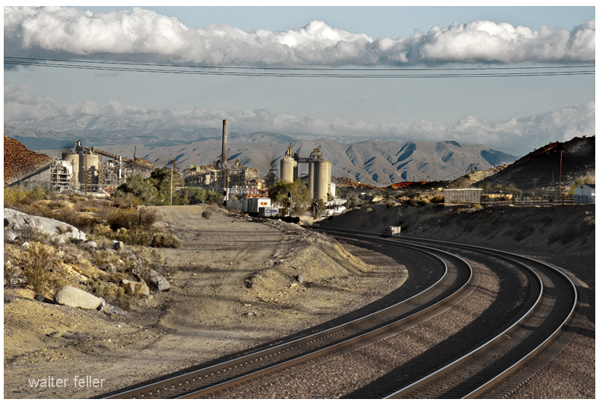The Southern Pacific
The Southern Pacific began construction at Mojave in February 1882 of a new line to Needles, on the Colorado River. The destination was reached April 19, 1883. At the same time the Atlantic and Pacific Railroad had been building westward from New Mexico. It reached the Arizona bank of the river a month after the Southern Pacific. On August 8 the A&P completed a bridge across the river. The Southern Pacific built its line to halt the A&P’s advance into SP’s lucrative California markets. However, A&P stood ready to make good on its threat to build a parallel line into California. This would have rendered the newly built Southern Pacific line redundant and of no economic value, and as a result the Southern Pacific agreed to sell the new line. On October 1, 1884 the A&P paid about $7 million for the rail line to Mojave. In alliance with the Atlantic and Pacific, the California Southern Railroad was built from San Bernardino over Cajon Pass to Barstow where it connected to the A&P in November 1885. (After 1893, the Atlantic and Pacific was known as the Santa Fe.) The mines at Oro Grande, especially the limestone quarries for cement, immediately benefited from the improved transportation.
Daggett was by far the most important source of revenue along the new line between Mojave and Needles. The mining activity at Calico was in full swing. In addition, Daggett became an important receiving point from desert mines. Between 1882 and 1883 borax ore was hauled from the Eagle Borax Works in Death Valley to Daggett. Borax was also hauled from William Coleman’s Amargosa Borax Works located at Shoshone. In 1890 the borax deposit at Borate, located just east of the silver camp of Calico, was developed. In 1898 an eleven-mile railroad was built from the deposit to Daggett.

With depletion of the borax deposit at Borate and the discovery of borax southeast of Furnace Creek Ranch in Death Valley, Francis Marion “Borax” Smith was looking for a transportation solution that didn’t involve mules. In his first attempt, a road was graded from the California Eastern Railroad terminus at Ivanpah to the Lila C. Mine. In the April 1904 inaugural run, a steam powered tractor pulled a “train” of open ore cars 14 miles, then quit operating. Smith concluded constructing a railroad was the only alternative. On July 19, 1904 the Tonopah and Tidewater Railroad was incorporated. The first rails were laid in November 1905 from Ludlow on the Santa Fe; by June 1907 the rails had finally reached Zabriski, north of the Amargosa River gorge, near Shoshone. Briefly ore was teamed from the Lila C. Mine to the railhead. The line reached the mine on August 16, 1907, and was completed on October 30, 1907 to Gold Center, just south of Beatty, Nevada. When the Lila C. Mine became exhausted, operations were moved twelve-miles to the northwest to the Biddy McCarty Mine. The Death Valley narrow gauge railroad was constructed to connect the mines with the Tonopah and Tidewater. This line was completed on December 1, 1914.
Previous - Next